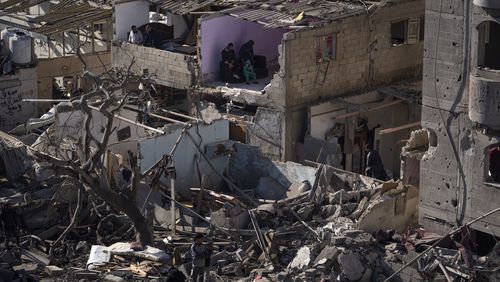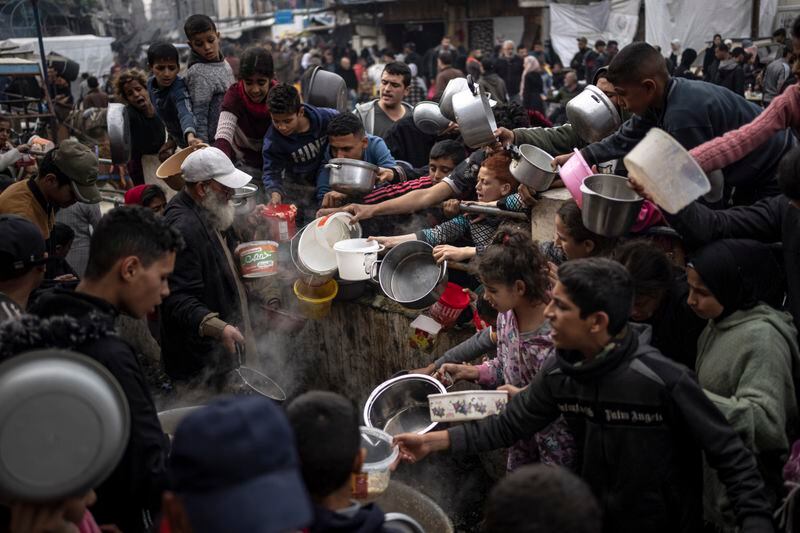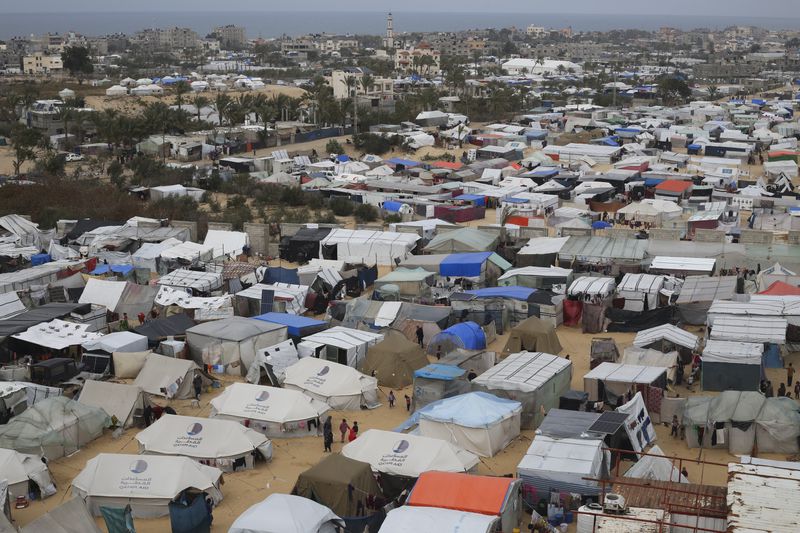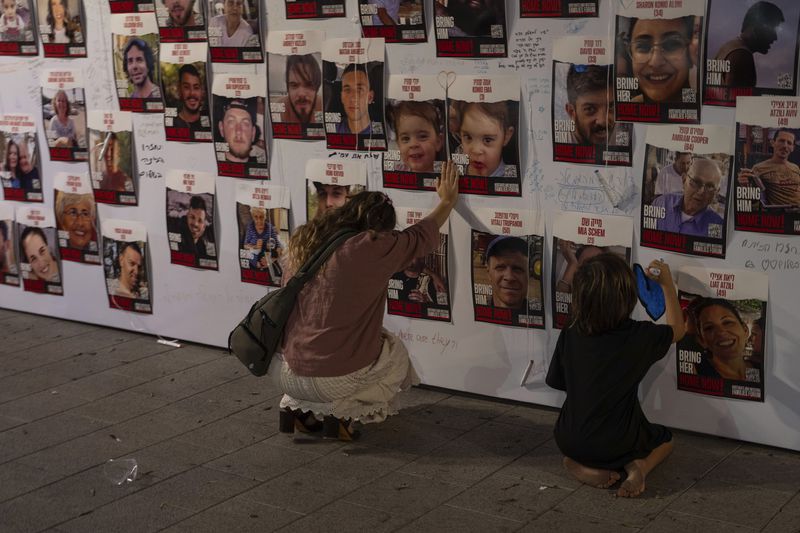CAIRO (AP) — Hamas has formally accepted a cease-fire deal that could end the war in Gaza. Israel, however, insists that its core demands were not met in the proposal mediated by Egypt and Qatar.
The Palestinian militant group says the cease-fire would unfold in three phases of six to seven weeks each, with Israeli hostages released in exchange for Palestinian prisoners and the gradual withdrawal of Israeli forces from all of the Gaza Strip and increased humanitarian aid.
Israel has previously said it would not agree to either a full withdrawal of its forces or a permanent cease-fire.
Here’s what we know about the deal, according to a copy of the proposal published by Hamas.
HOSTAGES FOR PRISONERS
The first phase would pause fighting for 42 days.
During that time, Hamas would release 33 hostages, including the remaining Israeli women — both civilians and soldiers — as well as young people under age 19 who aren't soldiers, adults over 50, and people who are ill.
Hamas would free three hostages on the third day of the cease-fire, releasing three more captives every seven days. Priority would be given to women.
By week six, all civilian detainees in this stage of the agreement should be free. If there are not enough living hostages in this category, Hamas would release their remains.
At this point, thirty Palestinian prisoners held in Israel would be released in exchange for each Israeli civilian hostage and 50 in exchange for each female soldier. Hamas also wants assurances that prisoners won’t be re-arrested on the same charges.
ISRAELI TROOP WITHDRAWALS
In the first phase, Israeli troops would withdraw from Gaza in a series of timed steps.
The military would pull back from a coastal road beginning on the third day after Palestinian prisoners start getting released.
Then, on day 22, Israeli forces would leave central Gaza, east of the main highway, to a nearby area along the border.
Displaced Palestinians could return to their home neighborhoods in the north.
Israel would not fly military or reconnaissance planes over Gaza for 10 hours each day, and for 12 hours on the days of release of detainees and prisoners.
HUMANITARIAN AID
Starting from the first day of the cease-fire, Israel would allow “intensive and sufficient quantities” of humanitarian aid, with 600 trucks entering Gaza daily — including 50 fuel trucks — with 300 trucks allocated to hard-hit northern Gaza.
There would also be supplies provided for temporary housing, and repairs to Gaza's damaged infrastructure.
HALT THE FIGHTING
In the meantime, no later than the 16th day of the cease-fire, talks would begin on restoring “a sustainable calm,” which the proposal lays out as a permanent cessation of hostilities by both sides and the Israeli withdrawal from Gaza.
PHASE 2
The parties would need to negotiate the exact terms of the second phase, which would also last 42 days.
Under the current proposal, Hamas could release all the remaining men, both civilians and soldiers. In return, Israel could free an agreed-upon number of Palestinian prisoners and detainees.
The releases won’t occur until the “sustainable calm” takes effect and all Israeli troops withdraw from Gaza.
PHASE 3
The third and final stage would include the release of the remains of deceased hostages still in Gaza, more prisoners held by Israel, and the start of a five-year reconstruction plan. This is also when Hamas wants an end to the blockade on Gaza by Israel in cooperation with Egypt.
The plan says that Hamas would agree not to rebuild its military arsenal.
STICKING POINTS
Israeli Prime Minister Benjamin Netanyahu called the Hamas proposal a failed attempt to "torpedo" Israel's military operation in Rafah. Israeli troops seized control of the vital Rafah border crossing overnight Tuesday, just hours after Hamas said it had accepted the Egyptian-Qatari cease-fire plan.
Speaking Tuesday, Netanyahu said the latest proposal fell far short of Israel's demands. “Israel will not allow Hamas to restore its regime of evil in the strip. Israel will not allow it to rebuild its military capabilities,” Netanyahu said.
Hamas says it will not make further concessions under Israeli military pressure. “The text we agreed to, before it was presented to us, was approved by all the mediators, including the American side,” Hamas political official Osama Hamdan said Tuesday. The Associated Press could not independently confirm these details about the negotiations.
The threat of a full-scale ground operation into Rafah threatens to widen a rift between Israel and its main backer, the United States. But Netanyahu's far-right coalition partners have threatened to bring down his government if he calls off the offensive or makes too many concessions in cease-fire talks.
POST-WAR UNCERTAINTY
The proposal calls for a reconstruction plan lasting for three to five years, supervised by Egypt, Qatar and the United Nations. It's unclear who will run Gaza during reconstruction, what will happen to Hamas during that time and who will pay for the daunting job of rebuilding.
The Biden administration says it won’t accept a return of Israeli military occupation of the Gaza Strip.
As a precursor to Palestinian statehood, the United States has called for a political roadmap that includes a return of the internationally recognized Palestinian Authority, which Hamas ousted from Gaza in 2007.
Netanyahu and his right-wing government reject a role in Gaza for the Palestinian Authority, and say they will never allow a Palestinian state.
___
Callister reported from New York. Associated Press writer Abby Sewell in Beirut contributed.
__
Follow AP's coverage of the war at https://apnews.com/hub/israel-hamas-war
Credit: AP
Credit: AP
Credit: AP
Credit: AP
Credit: AP
Credit: AP
Credit: AP
Credit: AP










